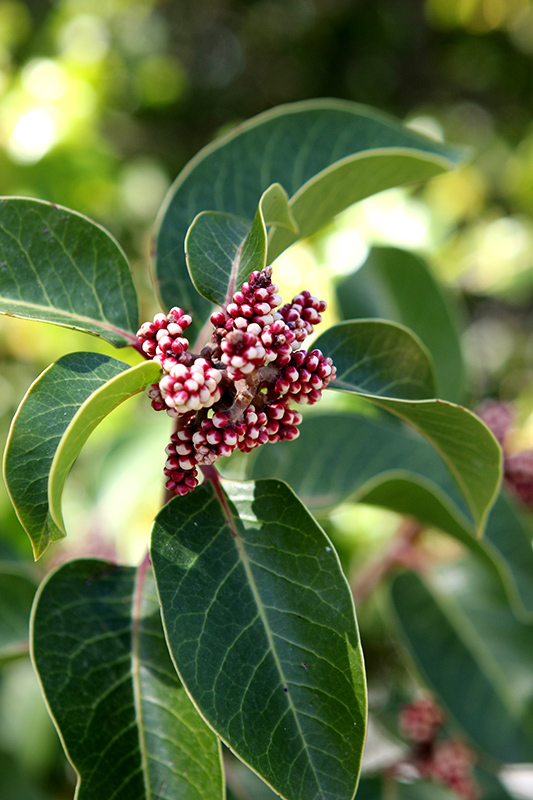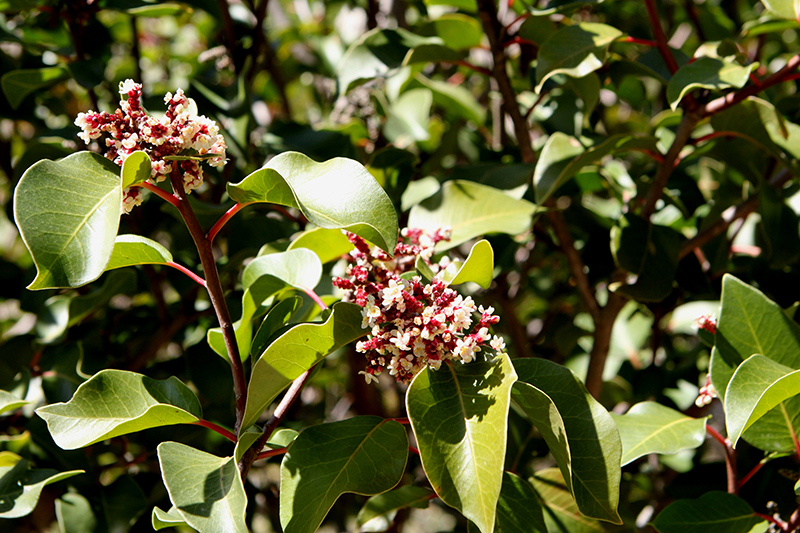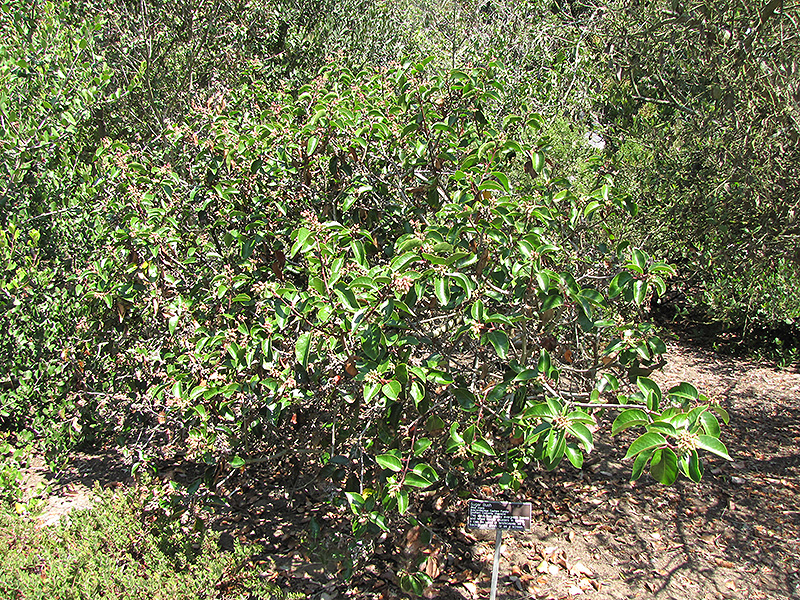Plant Finder
Height: 10 feet
Spread: 10 feet
Sunlight:
![]()
![]()
Hardiness Zone: 8a
Other Names: Sugar Sumac
Brand: Monrovia
Description:
A tough, southwestern native that is great for low-water sites; may be shaped as a small tree or massed as a hedge; showy flower clusters produce interesting spikes of fuzzy red berries in summer; good for slopes and firescaping
Ornamental Features
Sugar Bush features showy spikes of white flowers with shell pink overtones at the ends of the branches from early to mid spring. It features an abundance of magnificent red berries from early to mid summer. It has green foliage with light green veins. The large glossy pointy leaves remain green throughout the winter. The smooth gray bark and brick red branches add an interesting dimension to the landscape.
Landscape Attributes
Sugar Bush is an open multi-stemmed evergreen shrub with an upright spreading habit of growth. Its relatively fine texture sets it apart from other landscape plants with less refined foliage.
This is a high maintenance shrub that will require regular care and upkeep, and is best pruned in late winter once the threat of extreme cold has passed. It is a good choice for attracting butterflies to your yard. Gardeners should be aware of the following characteristic(s) that may warrant special consideration;
- Suckering
Sugar Bush is recommended for the following landscape applications;
- Accent
- Mass Planting
- General Garden Use
- Naturalizing And Woodland Gardens
Planting & Growing
Sugar Bush will grow to be about 10 feet tall at maturity, with a spread of 10 feet. It tends to be a little leggy, with a typical clearance of 4 feet from the ground, and is suitable for planting under power lines. It grows at a medium rate, and under ideal conditions can be expected to live for approximately 30 years.
This shrub does best in full sun to partial shade. It is very adaptable to both dry and moist growing conditions, but will not tolerate any standing water. It is considered to be drought-tolerant, and thus makes an ideal choice for xeriscaping or the moisture-conserving landscape. It is not particular as to soil type or pH. It is highly tolerant of urban pollution and will even thrive in inner city environments. This species is native to parts of North America.






